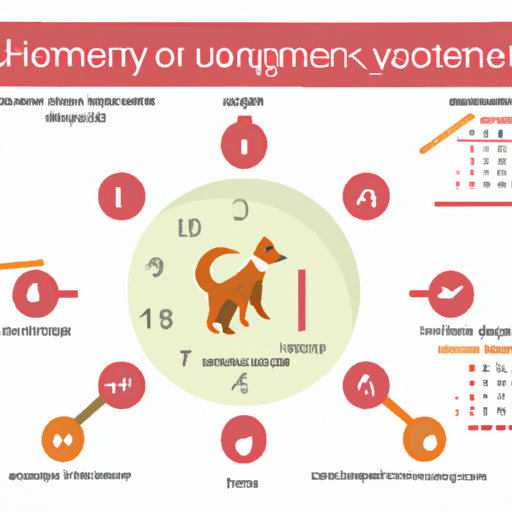As a devoted pet parent, understanding your dog’s physiological processes is crucial for their health and well-being. One of the most significant processes to comprehend is the female dog’s reproductive cycle, commonly referred to as her period.
Understanding Your Dog’s Reproductive Cycle
Dogs don’t have periods in the same way that humans do. What they experience is a “heat” cycle that includes several phases, including Proestrus, Estrus, Metestrus/Diestrus, and Anestrus.
- Proestrus: This phase lasts 7-10 days, during which female dogs may experience vaginal bleeding similar to a human period.
- Estrus: Also known as the ‘fertile’ phase, this lasts between 5-9 days. The bleeding becomes lighter.
- Metrus/Diestrus: This phase lasts about 60-90 days. Dogs seem to return to their usual behavior and there’s no more bleeding.
- Anestrus: This is the resting phase that lasts about 4-5 months before the cycle restarts.
How to Care For Your Dog During Her Heat Cycle
Caring for a female dog during her heat cycle involves attention to cleanliness, monitoring of behavior, and prevention of unwanted pregnancies. Here are some helpful tips:
- Use Dog Diapers: These are specifically designed for dogs in heat, helping manage the bleeding and keeping your home clean.
- Monitor Her Behavior: Dogs can act differently during their cycle. They may be more affectionate, restless, or show signs of discomfort.
- Prevent Unwanted Pregnancies: Keep your dog away from unneutered male dogs during the entire cycle, especially during the Estrus phase when she’s fertile.
Recognizing Signs of Abnormalities
Understanding what’s normal for your dog during her heat cycle will help you spot potential health issues early. Some signs of abnormality may include:
- Excessive bleeding or discharge
- Skipping a heat cycle
- Severe lethargy or behavioral changes
- Excessive licking of the genital area
If you notice any of these signs, it’s crucial to consult with a veterinarian.
The Importance of Spaying Your Dog
Spaying your female dog not only prevents unwanted pregnancies but also eliminates the risk of several health issues, such as uterine infections and certain types of cancers. The table below summarizes the benefits and drawbacks of spaying:
| Benefits of Spaying | Drawbacks of Spaying |
|---|---|
| Prevents unwanted pregnancies | Surgical risks |
| Reduces risk of certain health issues | Can lead to weight gain |
| Eliminates heat cycles | Can alter behavior |
Frequently Asked Questions
Q: How often do dogs go into heat?
A: On average, dogs go into heat twice a year, but it can vary depending on the breed and individual dog.
Q: Can I walk my dog while she’s in heat?
A: Yes, but be cautious. Avoid areas with other dogs and keep her on a leash at all times to prevent unwanted attention.
Q: How can I comfort my dog during her heat cycle?
A: Provide a quiet, comfortable space for her. Extra cuddles, a warm blanket, or a comforting toy can help.
Q: Should I breed my dog during her first heat cycle?
A: It’s generally recommended to wait until at least the third heat cycle to breed, as the dog is more mature and better prepared for pregnancy.
Whether you’re a new dog owner or an experienced one, understanding your dog’s reproductive cycle is essential. As always, consult with your vet for any concerns or questions you may have about your pet’s health.



